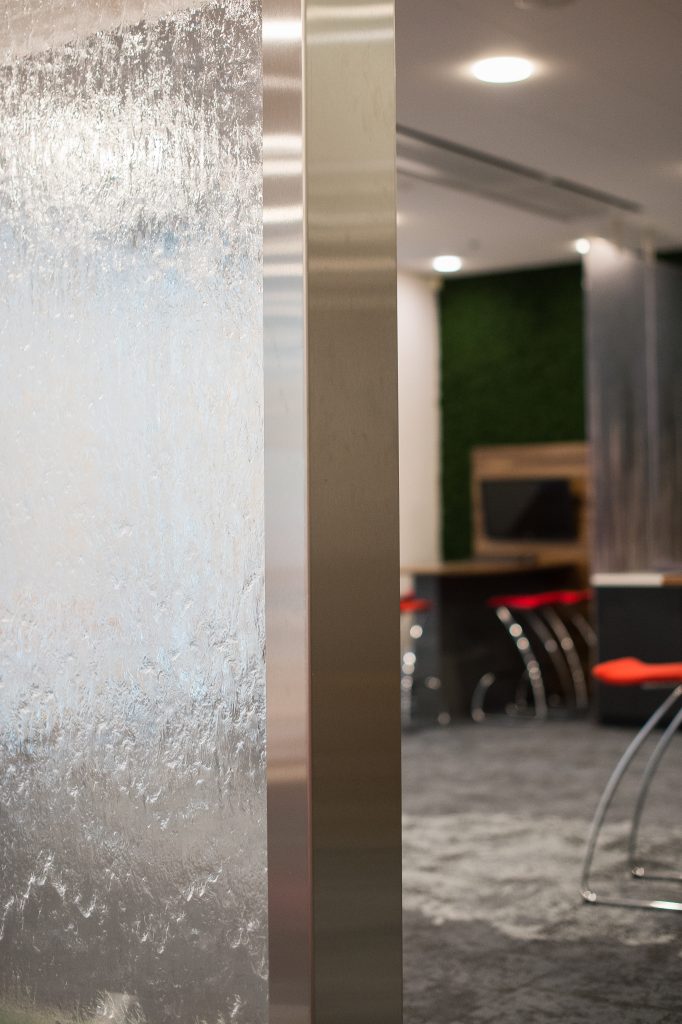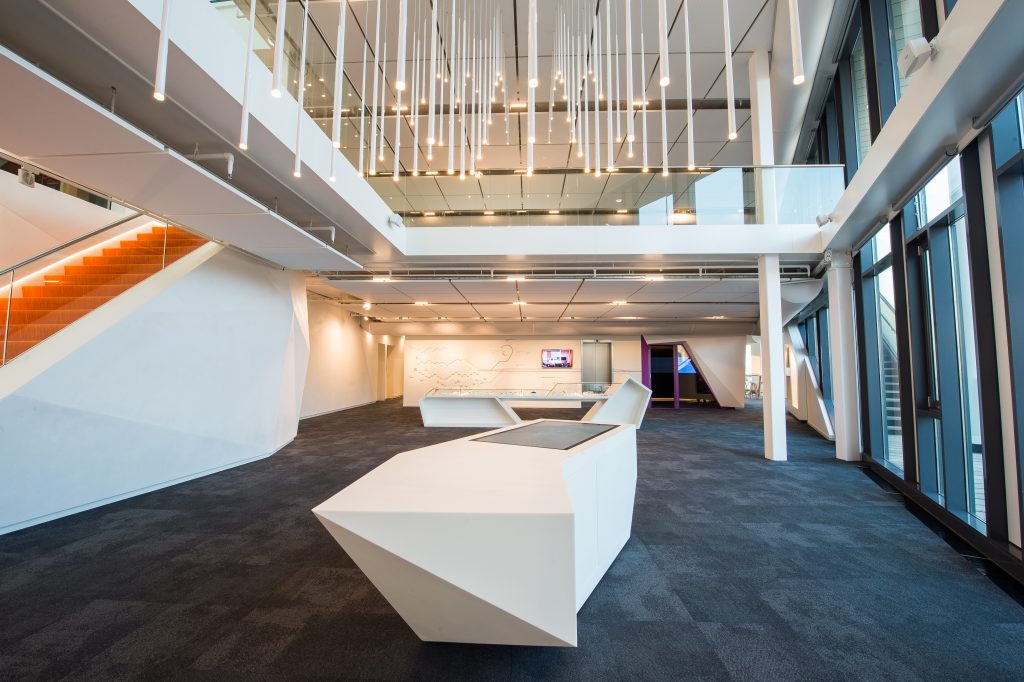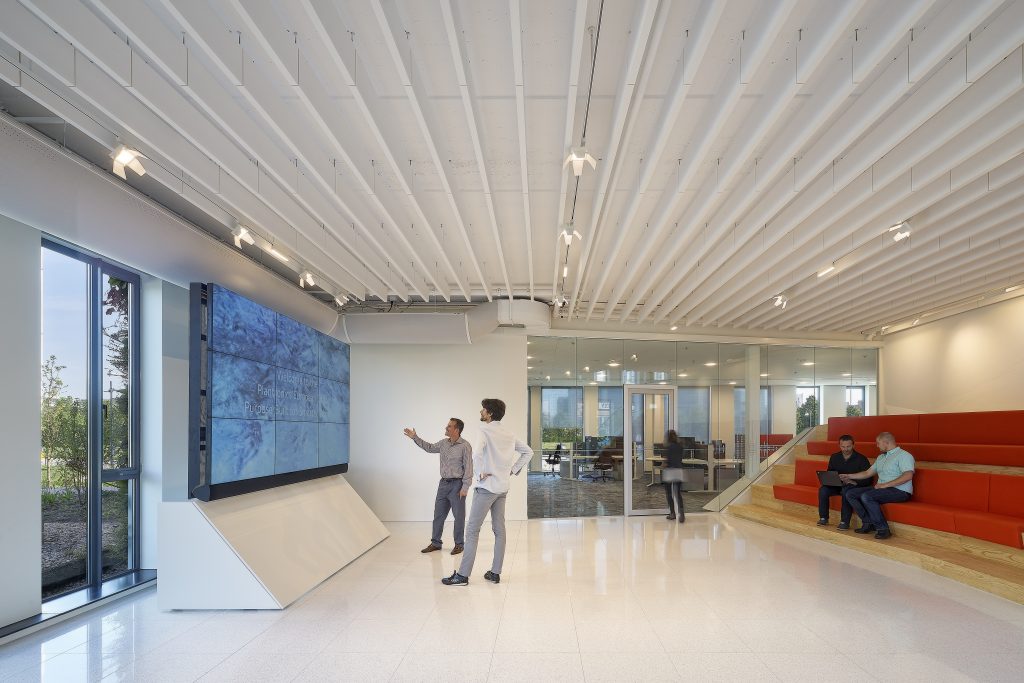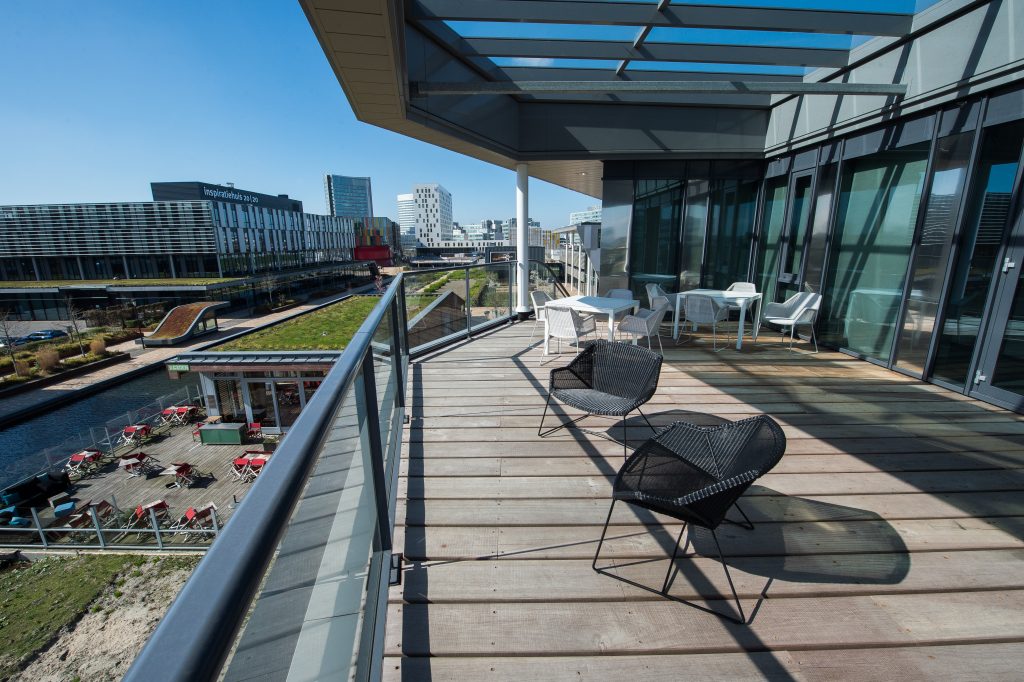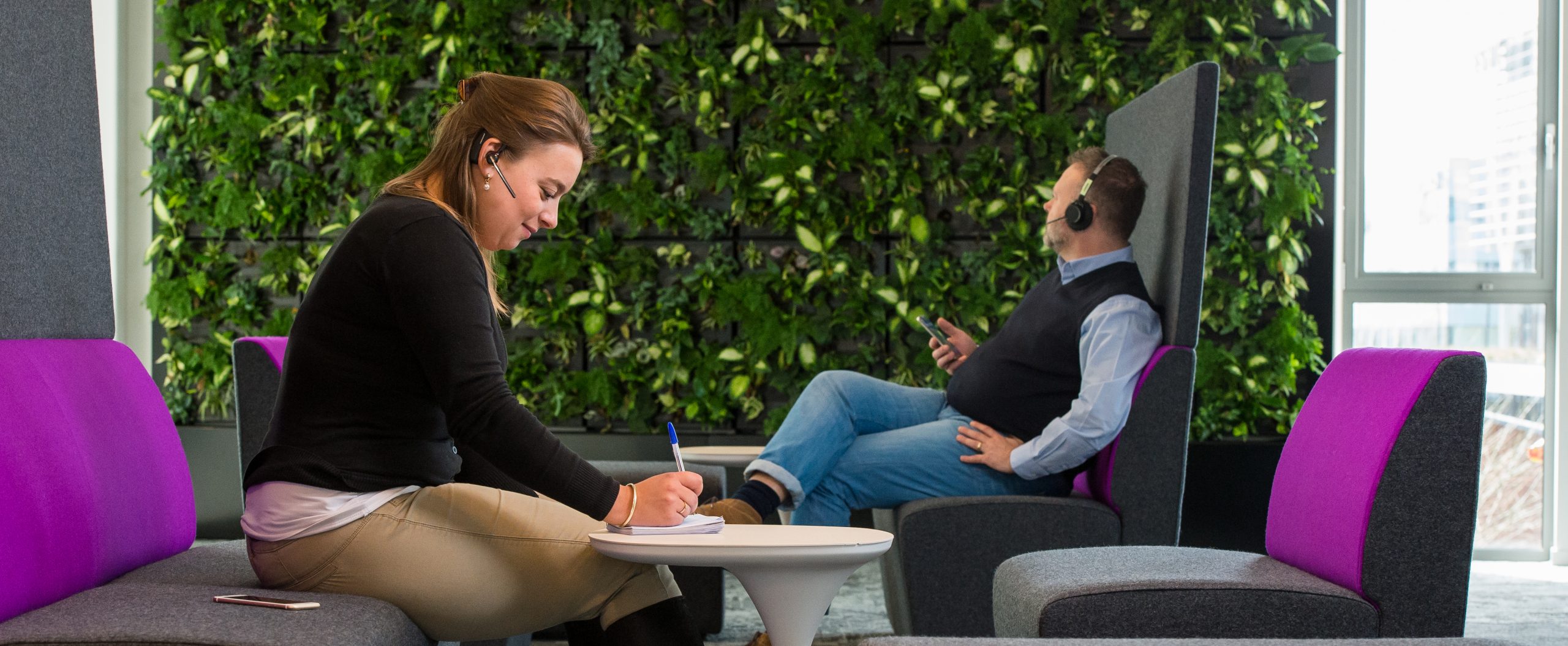
When Plantronics selected Park 20|20 in Hoofddorp, the Netherlands, as the site for their new European headquarters, their primary objective was to focus on employees’ health and wellbeing through innovative, human-centered design — a familiar territory for the pioneering audio and communications technology leader which provided the tech that allowed Neil Armstrong to transmit his famous first words on the moon. Recently acquired by Poly, Plantronics collaborated closely with Charlottesville, Va.- based design architect and Park 20|20 masterplanner William McDonough + Partners (WM+P), to create a Cradle to Cradle-inspired workplace. The result is a building that promotes a perfect balance between wellness and productivity through design strategies that benefit both human and environmental health focused on safe-then-circular materials, user comfort and connectivity to nature.
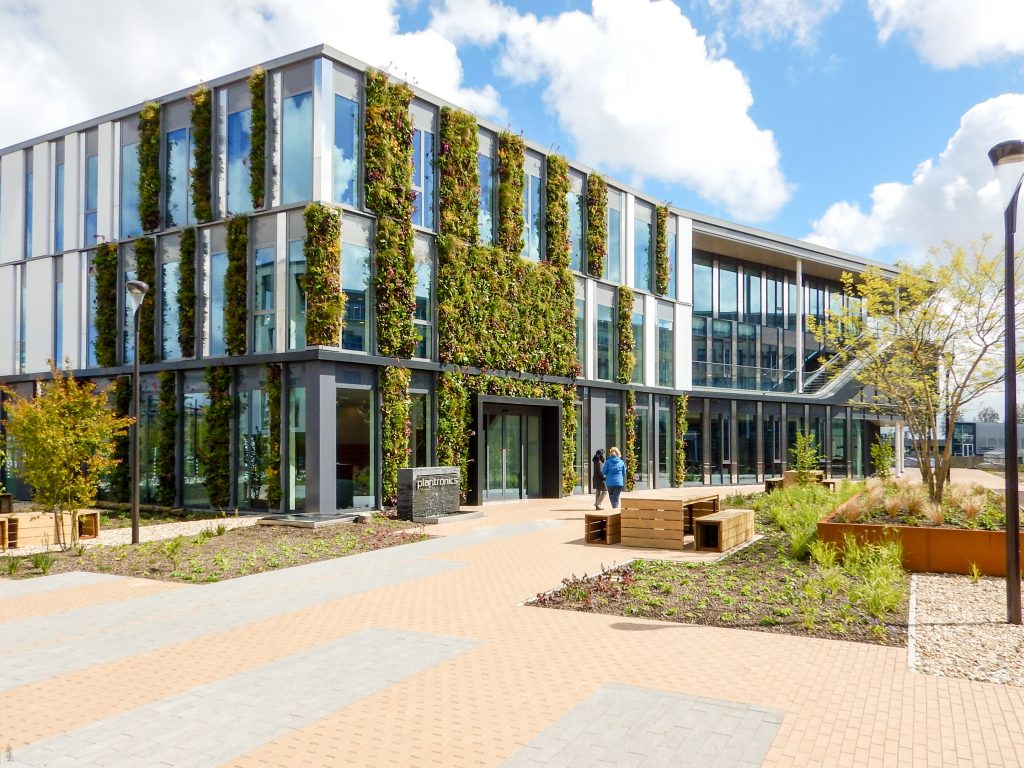
Located within the world’s first Circular Economy development inspired by WM+P Founder William McDonough’s Cradle to Cradle Design™ framework, the building is situated within a shared ecosystem of butterfly gardens, greenhouses, and active and passive recreation spaces able to host various outdoor activities and gatherings. Within easy walking and biking distance to the nearby intermodal transit station, the building is connected to the park’s shared systems that include greywater harvesting, bio-filtration, cleansing and reuse. Its helophyte filter system is integrated within a central canal water feature which provides a visual and acoustic backdrop for south-facing outdoor seating areas adjacent to the ground floor building cafeteria.
Nature-inspired elements are integrated in direct and indirect ways within the design of the building and spaces in order to increase occupant connectivity to the surrounding environment. While mirrored metal panels embedded within the exterior façade serve to repeat colors and reflections of the sky, trees and gardens — enlivening the exterior with a dynamic, mutable quality — vegetated green wall panels at the building entrance lead visitors into a diagonally-stepped atrium that faces the park and provides visual connectivity to upper-level exhibit and experience spaces.
The atrium is anchored by a vertical three-story mass that houses enclosed meeting, collaboration, concentration, and amenity spaces. Dubbed the “crystal,” this shaped element in the center of the building abstractly evokes geological formations through its faceted surfaces, reflecting and distributing the direct abundant sunlight from the continuous linear skylight located above open monumental stairs, bringing daylight deep into the center of the building. This central object also serves to mediate between the semi-public exhibit spaces and the open-office work spaces facing the street.
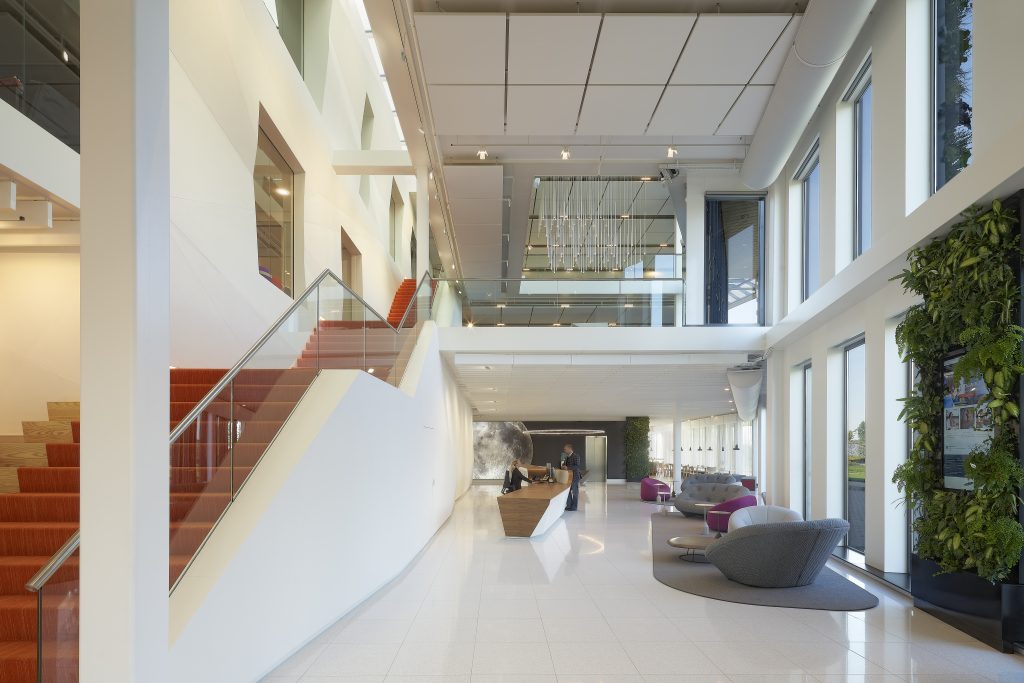
Designed to promote healthy circular material flows, the building is designed for disassembly and as a material bank, allowing materials and components to be harvested after the building’s use period either to be returned to the earth safely as biological nutrients or to industry for reuse or upcycling as technical nutrients. As with all of the nine buildings WM+P has designed and built at Park 20|20, the design team worked closely with Plantronics to identify and incorporate numerous Cradle to Cradle Certified™ materials, ensuring the use of healthy materials through the world’s most rigorous and advanced, science-based, third-party certification for designing and making products for the circular economy. To date, Park 20|20 as a whole contains the world’s largest concentration of Cradle to Cradle Certified products.
To ensure an optimal, holistic employee experience with an environment that actively contributes to the performance, productivity and well-being of user’s physical comfort, abundant daylight access through floor-to-ceiling operable windows, clean fresh air systems, and optimized lighting and controls are integrated. For thermal comfort, rooms and spaces within 3.6-meter grid zones can be individually controlled and optimized based upon the number of occupants. Additionally, indoor air quality is rigorously monitored and CO2 levels are actively managed to stay between 500 and 1,000 ppm. These active systems are complemented by building amenities that include a gym, direct access to outdoor seating terraces and a cafeteria which serves fresh vegetables and produce grown and harvested from on-site greenhouses.
As a company focused on perfecting human communication through technology, Plantronics also specifically sought to combat speech distraction common in open offices in addition to the noise generated by aircraft from nearby Schiphol airport. Through intelligent acoustic optimization systems that combine the restorative power of nature with cutting-edge technology, their approach reduces noise levels by using soothing nature sounds attuned to the frequencies of human speech.
Plantronics conceived and implemented “Habitat Soundscaping,” multi-sensory solutions using biophilic design principles that integrate the sights and sounds of nature to minimize noise and distraction and optimize sound and acoustic comfort and quality. Decibel levels are continuously monitored and adjusted within all areas which are designed to minimize sound wave reverberation through sound-absorbent interior surfaces. Conceived as an “acoustic temple,” the interior environment incorporates sound masking and digital or physical scenes of natural landscapes including vegetated walls and water features to create a symphony of sound layers optimal for a variety of working conditions to enhance collaboration, contemplation, concentration, and communication.
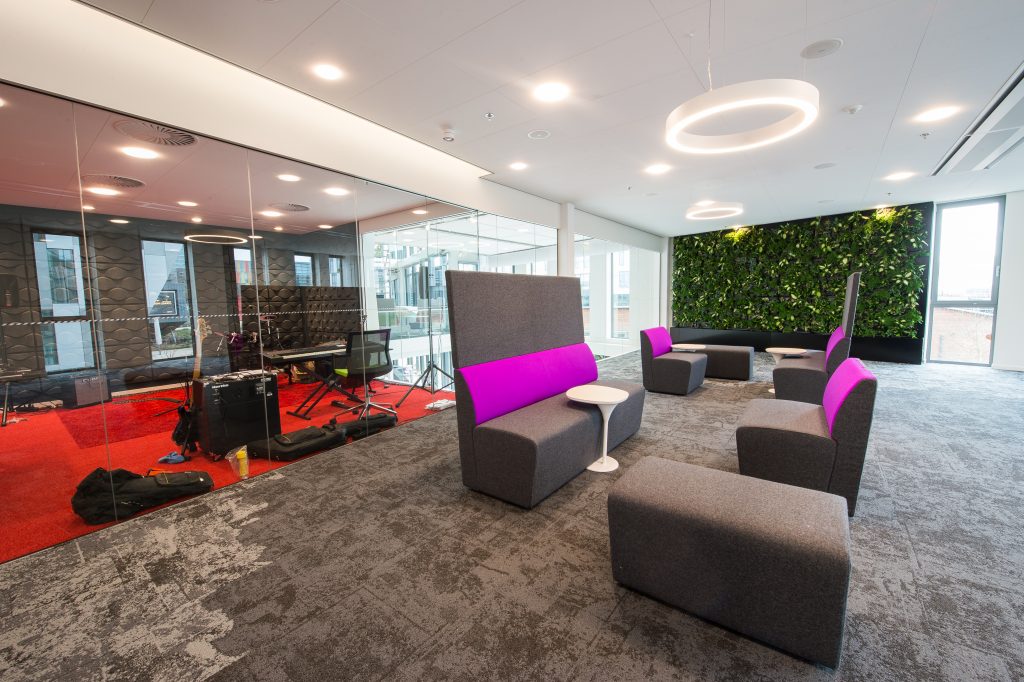
The Leesman Index, which measures employee satisfaction through a wide range of design aspects, including the level of support for important work activity, acoustics, temperature and natural light, ranked Plantronics’ headquarters as one of the world’s most effective and satisfying work environments for employees. The European headquarters is 1 of only 6 percent of buildings globally which have obtained the highest Leesman ranking possible — Leesman+. Based on a post-occupancy survey, Plantronics estimates a value of €2.1 million per year due to improved employee productivity in the office.
Awarded a BREEAM-NL Excellent rating, Plantronics’ European headquarters has become a truly functional and engaging workplace that promotes both collaboration and focused work and contributes to improved employee productivity and performance through the active and thoughtful consideration of their health, wellbeing and comfort from the start – something that will grow in significance as the design professions navigate the post-pandemic workplace.
Project Information
Client: Plantronics / Delta Development
Area: approx. 3,531 m2
Program: office, conference, meeting, café, fitness, gathering areas, display/experience areas, outdoor terraces
Project Team
Design Architect: William McDonough + Partners
Architect of Record: N30
Interior Design: D/Dock with N30,
Exhibit Design / Technology Integration: Gensler
Landscape Architect: HollandsGroen BV
MEP Engineer: Techniplan
Structural Engineer: Van der Vorm Engineering
BREEAM Consultant: DGMR
Contractor: IBB Kondor
Cradle to Cradle Products and Material Assessments: MBDC
Materials
Cradle to CradleTM Certified Products include:
Glazing: AGC Glass
Aluminum profiles of windows and curtain wall: Alcoa
Exterior base: ClickBrick
Plasterboard: Gyproc
Wall cladding/sills/windows: Holonite
Tiles: Mosa
Lighting: BBLight
Insulation: Styrofoam XPS
Flooring: Forbo Marmoleum
Vegetated walls: Sempergreen
Other notable material and product choices include:
Interior partitions: Plan Effect Systeemwanden
Cosentino Tiles
All timber used is FSC or PEFC certified.
Concrete products are provided as much as possible of recycled granules.

